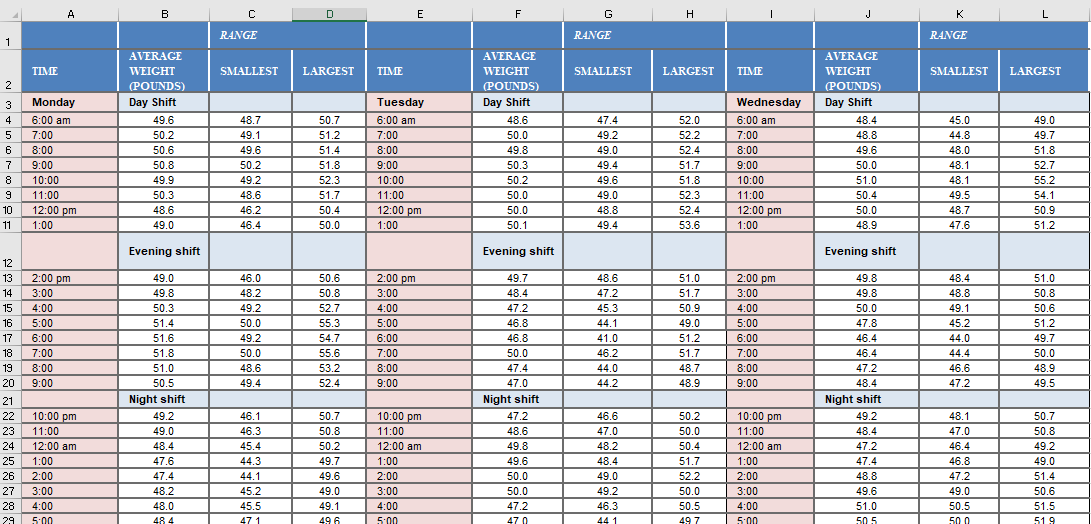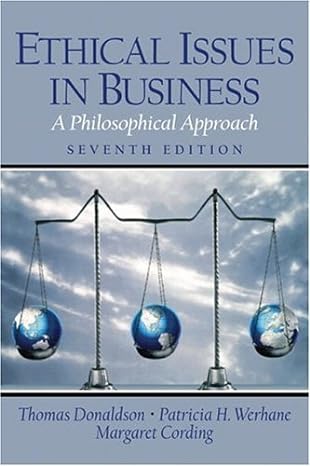Question
Instructions Carefully read the case study and answer the related questions. Use complete sentences and paragraphs to answer the questions and explain your answers. Use
Instructions
- Carefully read the case study and answer the related questions.
- Use complete sentences and paragraphs to answer the questions and explain your answers.
- Use at least 2 sources beyond your textbook. Make sure to cite your sources in the text and also in a reference list at the end of the document using APA 7 format.
- Do not copy and paste directly from your sources. Paraphrase using your own words.
- Save this completed assignment as YourLastName_FirstInitial_CS1
- Submit your completed document to the eCentennial dropbox for this assignment on or before Saturday 11:59 pm of the week of Module 7.
Case Study
Bayfield Mud Company
In November 2015, John Wells, a customer service representative of Bayfield Mud Company, was summoned to the Houston warehouse of Wet-Land Drilling, Inc., to inspect three boxcars of mud treating agents that Bayfield had shipped to the Houston firm. (Bayfields corporate offices and its largest plant are located in Orange, Texas, which is just west of the LouisianaTexas border.) Wet-Land had filed a complaint that the 50-pound bags of treating agents just received from Bayfield were short-weight by approximately 5%.
The short-weight bags were initially detected by one of Wet-Lands receiving clerks, who noticed that the railroad scale tickets indicated that net weights were significantly less on all three boxcars than those of identical shipments received on October 25, 2015. Bayfields traffic department was called to determine if lighter-weight pallets were used on the shipments. (This might explain the lighter net weights.) Bayfield indicated, however, that no changes had been made in loading or palletizing procedures. Thus, Wet-Land engineers randomly checked 50 bags and discovered that the average net weight was 47.51 pounds. They noted from past shipments that the process yielded bag net weights averaging exactly 50.0 pounds, with an acceptable standard deviation of 1.2 pounds. Consequently, they concluded that the sample indicated a significant short weight. (The reader may wish to verify this conclusion.) Bayfield was then contacted, and Wells was sent to investigate the complaint. Upon arrival, Wells verified the complaint and issued a 5% credit to Wet-Land.
Wet-Land management, however, was not completely satisfied with the issuance of credit. The charts followed by their mud engineers on the drilling platforms were based on 50-pound bags of treating agents. Lighter-weight bags might result in poor chemical control during the drilling operation and thus adversely affect drilling efficiency. (Mud treating agents are used to control the pH and other chemical properties of the core during drilling operation.) This defect could cause severe economic consequences because of the extremely high cost of oil and natural gas well-drilling operations. Consequently, special-use instructions had to accompany the delivery of these shipments to the drilling platforms. Moreover, the short-weight shipments had to be isolated in Wet-Lands warehouse, causing extra handling and poor space utilization. Thus, Wells was informed that Wet-Land might seek a new supplier of mud-treating agents if, in the future, it received bags that deviated significantly from 50 pounds.
The quality control department at Bayfield suspected that the lightweight bags might have resulted from growing pains at the Orange plant. Because of the earlier energy crisis, oil and natural gas exploration activity had greatly increased. In turn, this increased activity created increased demand for products produced by related industries, including drilling muds. Consequently, Bayfield had to expand from a one shift (6:00 A.M. to 2:00 P.M.) to a two-shift (2:00 P.M. to 10:00 P.M.) operation in mid2010, and finally to a three-shift operation (24 hours per day) in the fall of 2015.
The additional nightshift bagging crew was staffed entirely by new employees. The most experienced foremen were temporarily assigned to supervise the night-shift employees. Most emphasis was placed on increasing the output of bags to meet ever increasing demand. It was suspected that only occasional reminders were made to double-check the bag weight-feeder. (A double-check is performed by systematically weighing a bag on a scale to determine if the proper weight is being loaded by the weight-feeder. If there is significant deviation from 50 pounds, corrective adjustments are made to the weight-release mechanism.)
To verify this expectation, the quality control staff randomly sampled the bag output and prepared the chart on the previous page. Six bags were sampled and weighed each hour.
Questions
- Use Statistical Process Control tools to provide an analysis of the bag-weight problem and explain your results.
- Based on your analysis results, what procedures would you recommend for maintaining proper quality control?
- Operations Managers are responsible for 10 strategic management decisions. Explain which of those 10 decisions apply in this particular situation and what the Operations Manager needs to do to prevent the situation from occurring in the future.

Step by Step Solution
There are 3 Steps involved in it
Step: 1

Get Instant Access to Expert-Tailored Solutions
See step-by-step solutions with expert insights and AI powered tools for academic success
Step: 2

Step: 3

Ace Your Homework with AI
Get the answers you need in no time with our AI-driven, step-by-step assistance
Get Started


